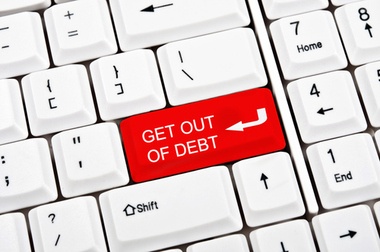Be patient and take it one step at a time…you’ll see results.
Get a clear picture
You have to understand the reality of your indebtedness. It’s impossible to make a plan to reduce debt if you don’t know the extent of it. Be honest. It does no good to deceive yourself about the amount of accrued debt.
Stop digging the hole
Don’t accumulate more debt. It’s a never-ending cycle with no way out. Spending habits must change for any plan to be successful. It’s crucial to live within your means, (below your means preferably,) in order to apply that money to debt repayment.
Build an emergency fund
Plan for emergencies first. A savings cushion is imperative for several reasons; it will allow some small modicum of security, you will be prepared for a crisis, and you will have liquid reserves for those instances when only cash will do.
Figure out where the money will come from
Track your spending for a while if necessary. Create a budget or if you prefer, call it a spending plan. Make cuts where possible, but be sure to make it livable. A budget does no good if it’s not possible to stick to it. Increase your income if possible. Take on extra work where available, volunteer for overtime, or find a second job. Most people don’t want to hear that, but if you seriously want to eliminate debt, sacrifice is necessary. The extra effort will pay off, literally.
Liquidate other assets
Consider liquidating other assets. Experts don’t recommend taking money out of a retirement funds, because that will have serious repercussions in the long term. Taking out a second mortgage is the most common tactic, but be careful before you do that. Only resort to borrowing further against your home if you can firmly commit to stopping the cycle of overspending, otherwise you will just accumulate more debt. You are putting your home at risk, so make sure it’s worth it. Do you have any investments or possessions you can sell? While you may be earning interest on your investments, if it’s less than the interest rate on your debt, they may be worth liquidating Consider selling unnecessary equipment, (boats, extra cars, etc.) or valuable jewelry if it doesn’t have extreme sentimental value.
Decide on a debt reduction plan
There are many methods to reduce debt. None is better or worse than the other. It’s a matter of choosing what’s the most comfortable for you. Money is a very emotional thing, and so debt reduction is partly mental. Find a plan that you can commit to. One option is to pay off the credit card or loan with the smallest balance. Be sure to make the minimum payments on other debts, but concentrate on paying off one debt at a time. Once the smallest debt is retired, move on to the next smallest. The advantage of this method is mostly mental. It allows you to gain momentum and the sense that you’re making progress. Another option is to pay off the debt with the highest interest rate. This is generally the most financially advantageous. By eliminating the higher rate credit cards, you’ll reduce the amount of interest that is paid overall. Once again, move to the next debt item with the highest rate. A third option is to eliminate the oldest debt first. Old debts have been hanging around for a long time. These debts have most likely taken an emotional toll. If you finished college 15 years ago and you’re still paying off your student loans, go ahead and pay those first. You’ll feel a tremendous sense of relief. No matter the extent of your debt, it’s not hopeless. However, commitment and persistence are vital. Whatever method you choose, if you’re consistent, you will be successful. (Photo credit:Get Out of Debt Key via Shutterstock)
